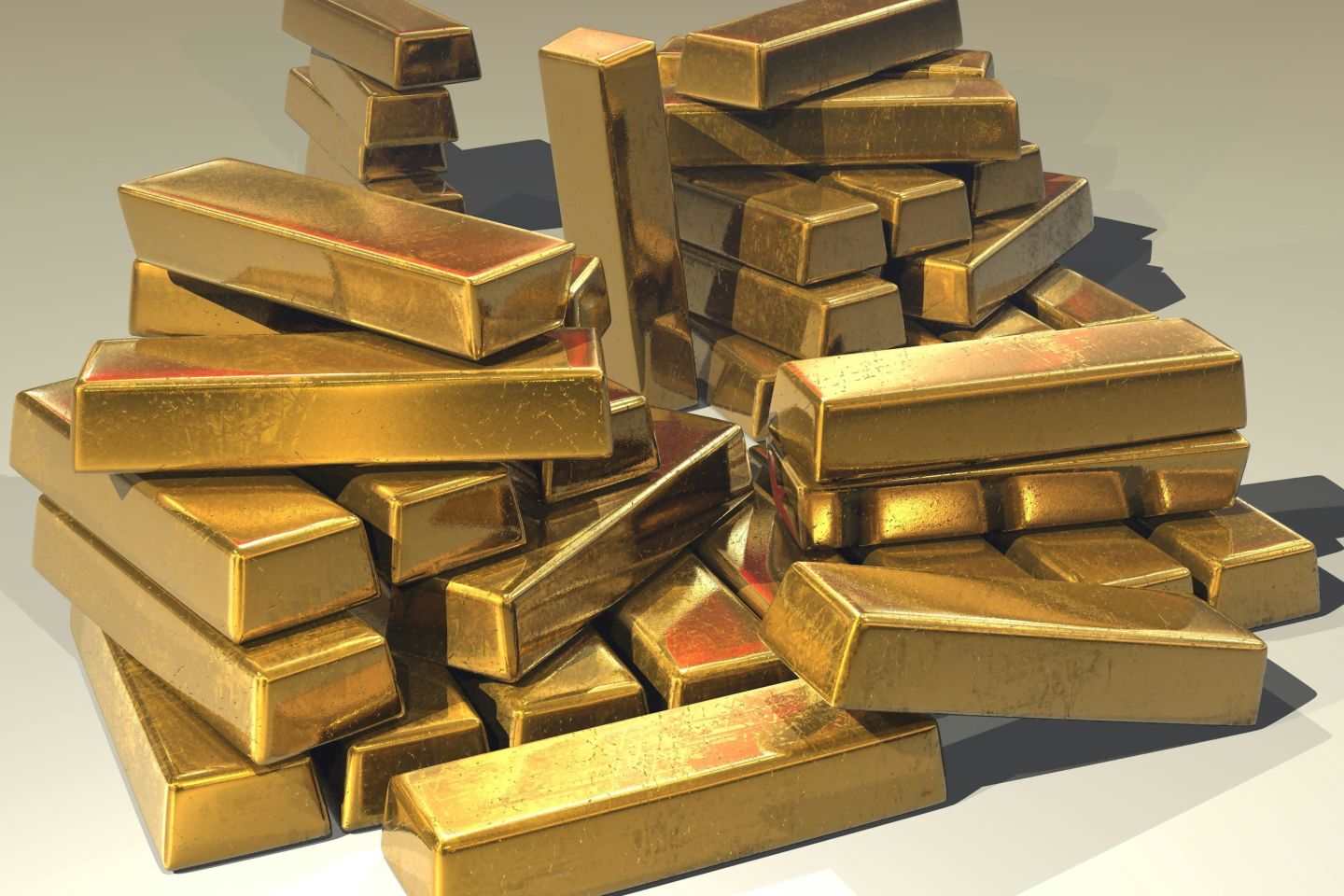Gold’s big year: can it keep shining?
Gold has soared in 2025. Learn more about what's driving prices and the ways you can invest in gold.

About Effie Zahos
Effie Zahos is a Director of InvestSMART and 9News Money Editor. She is one of Australia's leading personal finance commentators with 30 years of experience helping Australians make the most of their money. Effie is also the author of The Great $20 Adventure, A Real Girl's Guide to Money and Ditch the Debt and Get Rich. Passionate about financial literacy, Effie sits on the board of directors for Ecstra, a not-for-profit organisation committed to building the financial capability of all Australians.
What a year it’s been for gold! The price of the precious metal has surged about 46% since the beginning of the year – and that's despite a recent correction.
According to ABC Bullion data, gold started 2025 priced at about A$4,193 per troy ounce. It hit a record high of A$6,755 in mid-October before falling to around A$6,009 on 29 October. In a matter of days, gold had bounced back and was sitting at about A$6,130 at the time of writing in early November.
This year’s remarkable gold rush has delivered gains that outshone almost every other asset class. Gold has easily outperformed Australian shares – up about 8.9% year to date to the end of October (or 10.9% including dividends) – and residential property, which has risen 6.1% nationally over the past year. It's even edged ahead of global shares, with the MSCI World excluding Australia up 13.8% year to date to the end of October.
Not surprisingly, this has fuelled massive interest in gold, with queues forming outside gold dealers as Australians buy up or cash in the precious metal.
How did we get here? Why has gold soared so dramatically this year, and have investors sitting on the sidelines missed out on the gains? Let's take a look.
What’s behind gold’s meteoric rise?
Gold has long been regarded as a “safe haven” investment and a hedge against inflation.
That's because it ticks several boxes – gold is tangible (unlike, say, cryptocurrencies), it's durable, and it's extremely rare.
The World Gold Council (WGC) estimates only 216,265 tonnes of gold have ever been mined throughout history. By comparison, about 2.6 billion tonnes of iron ore are mined each year around the world.
It all adds up to gold's reputation as an asset that shines when investment markets are shaky, economies are slowing, or political systems are under threat.
Right now, it can be tempting to blame rising gold prices on the unpredictable trade policies of the Trump administration, ongoing inflation, and conflicts in Ukraine, the Middle East, and elsewhere. But that's simplifying the picture – the price of gold was climbing long before 2025.
One factor behind this is the move by several emerging economies – notably China, Russia, and Türkiye – to shift part of their official reserves away from traditional currencies, particularly the US dollar, and into gold.
Ironically, though, one of the biggest sources of demand for gold has been exchange-traded funds (ETFs). The WGC says investors have piled into physically backed gold ETFs for three consecutive quarters, with global inflows reaching $US26 billion ($A40 billion).
Long story short, demand for gold has escalated, and this has put a firecracker under the price in the process.
So why did the price of gold drop?
Gold’s blockbuster run came to an end in late October when the price pulled back after hitting record highs.
The thing is, a large part of the price fall came down to nervous investors cashing in their profits. The factors that pushed the gold price higher – demand from central banks, surging ETF inflows, and geopolitical uncertainty – remain largely unchanged.
This could see gold continue to climb higher, with some reports suggesting it could reach $US5,000 ($A7,700) in 2026.
On the flipside, some experts believe gold may be nearing its peak, pointing to signals seen in previous gold cycles. Morningstar market strategist Lochlan Halloway notes that while no one can predict the exact top, a few warning signs are starting to appear. One example is the gold-to-silver ratio, which currently sits around 85, well above its long-run average of about 55 – a pattern that has often emerged near past market peaks.
Could you be sitting on a goldmine?
After a year like this, it’s not just investors who are cashing in on gold's rise. Rummage through your jewellery box, and chances are you’ll find a few unloved pieces that could be worth more than you realise.
I recently had a chunky gold bracelet – which I’ve rarely worn – professionally valued during a segment on TODAY.
To my amazement, the bracelet is 99.9% pure gold, and weighing in at 55.8 grams, it’s worth over $11,000 for the gold content alone.
The catch? It was a graduation gift from my parents. So, for the time being, the bracelet is safely back in its box.
If you’ve got unwanted gold jewellery lying around, now could be a good time to cash in - or hold on a little longer. It could be worth even more in the future.
How you can invest in gold
After all that talk about gold prices and jewellery boxes, you might be wondering how you can add gold to your portfolio. Here are some options.
Option 1: Buy physical gold
Holding physical gold may make for great barbecue conversation but investing this way has two significant downsides.
Unless you plan on displaying your bullion on the mantel piece, you're going to need secure storage. This can come at a cost. Perth Mint for example, charges storage fees of around 1% a year.
The sting in the tail is that gold generates zero ongoing returns. You're relying solely on an uptick in value.
Option 2: Invest directly in companies linked to the gold industry
Around 40 ASX-listed companies have ties to the gold industry. Some, like Northern Star Resources, Regis Resources, and Evolution Mining, are major producers. Others are small exploration companies.
Buying into an established gold miner can mean earning dividends as well as potential capital gains. The drawback is that building a diverse portfolio of gold stocks can call for considerable capital, with the potential to rack up high brokerage fees.
Option 3: Invest via an ETF
From bullion to miners, ETFs can help you get a slice of the gold action – even if you don’t have a lot to invest – and all for low annual fees.
Several ETFs like the Global X Gold Bullion ETF (ASX: GXLD) or the Perth Mint ETF (ASX: PMGOLD) only hold physical bullion. You may not get ongoing returns but the annual management fee (0.15% for both ETFs) is likely to be a lot cheaper than professional storage costs.
Alternatively, a couple of ETFs focus on gold-related shares. If you're interested, Betashares Global Gold Miners Currency Hedged ETF (ASX: MNRS) and VanEck Gold Miners ETF (ASX: GDX) could be worth a look, though the small number of Aussie gold stocks means both ETFs include global gold shares.
If you’re keen to invest only in Aussie gold miners, a third possibility is an ETF that concentrates on the local resources sector. As a guide, the SPDR S&P/ASX200 Resources Fund (ASX: OZR) holds shares in around 50 Aussie mining stocks, with about 20% of its portfolio invested in the gold sector. The upside here is that you'll get more diversification than a gold-only fund.
The bottom line
Gold is the flavour of the month right now. When I read reports of people lining up to buy gold, my first thought is that fear of missing out (FOMO) is the key driver for many – and that’s never a good reason to invest. And with prices already near record highs, it's impossible to know whether they'll keep climbing or start to cool.
Yes, gold can have appeal as an investment, but for many people it should only play a small role in a diversified portfolio.
This article first appeared on InvestSMART. You can sign up to get a free newsletter, with fortnightly insights from InvestSMART’s team of experts including Paul Clitheroe and Effie Zahos.
Photo by Pixabay








